|
|
|  DSH 393* k7 d! y' Z5 }- P DSH 393* k7 d! y' Z5 }- P
& z+ _0 P8 p$ `2 Z* D8 r
| Test of non-separable thin sheet material
0 j# Z$ W2 d( B _. l- b& u | 8.89 V4 E( V9 Y, t) y
| 60065(ed.6)
: h( G; y7 {6 ]6 H |
- R7 C2 y; C" b$ A, f$ UStandard(s):
3 ]7 L: j0 p7 O( T: s$ VIEC 60065:1998, 6th ed.
0 u/ X. `: O3 H0 K! l9 k0 @Sub clause(s):
5 }0 v6 R- }9 C$ }' e- w8.8
& G* D6 Q1 @+ bSheet No:
7 }1 T6 ?; F- M, L" H* P0 `393% l1 x) G/ ]$ l1 e
Subject:6 v2 ]; `4 x. X5 u9 f6 h& ]$ A
Test of non-separable thin
/ _: ?! o% {5 u: b( \$ x9 n: i$ ?" Psheet material" c) x5 K. _; C5 V
Key words:" c+ w( {- l& v @' h. O
- Thin sheet material( |# i( _ F: ]! \; K k
Decision taken at the 39th
! X5 i. L# M/ W1 cmeeting 2002+ V9 C5 b0 G9 ~ v5 U* ?2 k; ~2 `% T" l
Question:- y( Y9 p0 d8 M. O; G/ R
Current technology is utilising non-separable thin sheet insulation within transformers for supplementary and% L" ]$ |5 x0 T7 F
/or reinforced insulation. How should such non-separable insulation be assessed for suitability in these
7 Q+ \* Q! L/ W4 H3 Lapplications?! r' B$ }. z9 f
Rationale:
1 E5 w+ p" V: G" y3 I6 o& lThere are non-separable thin sheet foils on the market used in wound components, which cannot be tested- G0 C ]( V6 V2 u* `- U5 W
according to the requirements and test-method in the existing standard. The current published( u1 k h0 X5 h/ @
requirements in the standard do not adequately address the use on non-separable thin sheet insulation A
! i4 q5 U% h1 u4 a1 L u, Jproposal was made by TC92-WG1 on how this matter can be handled.
7 E& e2 Q8 ?: TDecision:4 a' o1 U0 w* Z1 x
The following proposal shall be used until the new edition is published.
. Q% [7 o0 p* A5 C7 o; DThe following amendment to the standard will be published to address this issue:
8 {- e" N! W* p3 F2 E ?. _4 n! t3 nadd to clause 8.8 For requirements for non-separable thin sheet insulation in two or more layers, see 8.xx; n6 T7 W" ?" J0 r" t+ T5 \
add new clause 8.xx" g5 U2 J4 B4 a% t( @' P# y: R6 f, m
8.xx Requirements for non-separable thin sheet insulation in two or more layers4 ^8 l8 Y# J# Y: K/ u) ^3 D" \
Three separate test specimens of the sheet of 70 mm width shall be supplied by the manufacturer. The test
8 z) t* b) v' w2 o4 j3 U; Ris carried out by fixing a specimen on a mandrel made of steel, nickel plated, or brass with smooth surface
) C2 G/ a, n1 @ Z6 }2 n& ]( R. P7 Cfinish as shown in figure x. A metal foil (aluminium or copper) 0,035 mm ± 0,005 mm thick shall be placed/ ^, s ^* O1 ]4 g" X1 ], t
close to the surface of the specimen and submitted to a pull of 1 N. The metal foil shall be so positioned that
# x7 {, Y2 W/ d* B' G( U) Jits edges are 20 mm away from the edge of the specimen and, when the mandrel is in its final position, it
7 Z- O) Z. T- o4 [: a6 vcovers the edges upon which the specimen is lying by at least 10 mm. The specimen is submitted to a pull( o8 H }0 y, B* ~
of 150 N at its free end by an appropriate clamping device. The specimen shall be slowly rotated forwards
/ x/ U$ t# m+ Cand backwards three times by 230° without jerks. If the specimen breaks at the clamping device during the
$ p; h' F6 A$ K% W8 Urotation, the test is repeated. If one or more specimens break at any other place, the test is not fulfilled.8 W( ]/ N3 P* {4 X; `
While the mandrel is in its final position, within the minute following the final positioning, a test voltage of 1,5/ I: Y$ B8 b- b& m( a' u! k0 k1 V5 z3 J
times the value specified in table 5 is applied, as described in 10.3.2, between the mandrel and the metal
6 q5 d0 n C! ]* Afoil. No flashover or breakdown shall occur during the test, corona effects and similar phenomena being" _8 h2 u" _0 Z! ?' P
disregarded.. x% O; T' Y/ P# s% N/ {" F$ |% Z
add new Figure x (Figure 6 of IEC 61558-1)
3 [+ Z# c. M' A5 _) c5 U2 q/ c+ T: F
q% M5 H+ y6 w9 @8 C) ^' R
|
本帖子中包含更多资源
您需要 登录 才可以下载或查看,没有账号?注册安规
x
|



 窥视卡
窥视卡 雷达卡
雷达卡 发表于 2012-11-8 18:55
发表于 2012-11-8 18:55
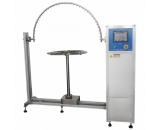

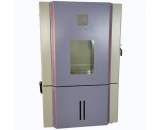

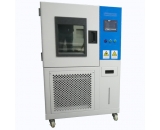

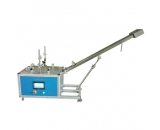

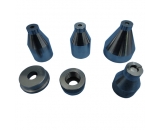






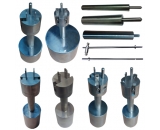
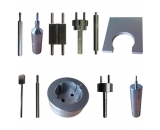
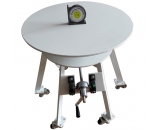
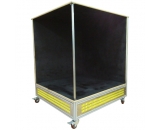

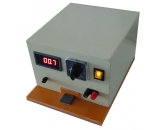
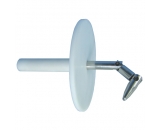
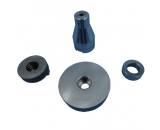
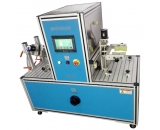
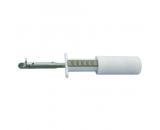
 提升卡
提升卡 置顶卡
置顶卡 沉默卡
沉默卡 喧嚣卡
喧嚣卡 变色卡
变色卡 抢沙发
抢沙发 千斤顶
千斤顶 显身卡
显身卡













